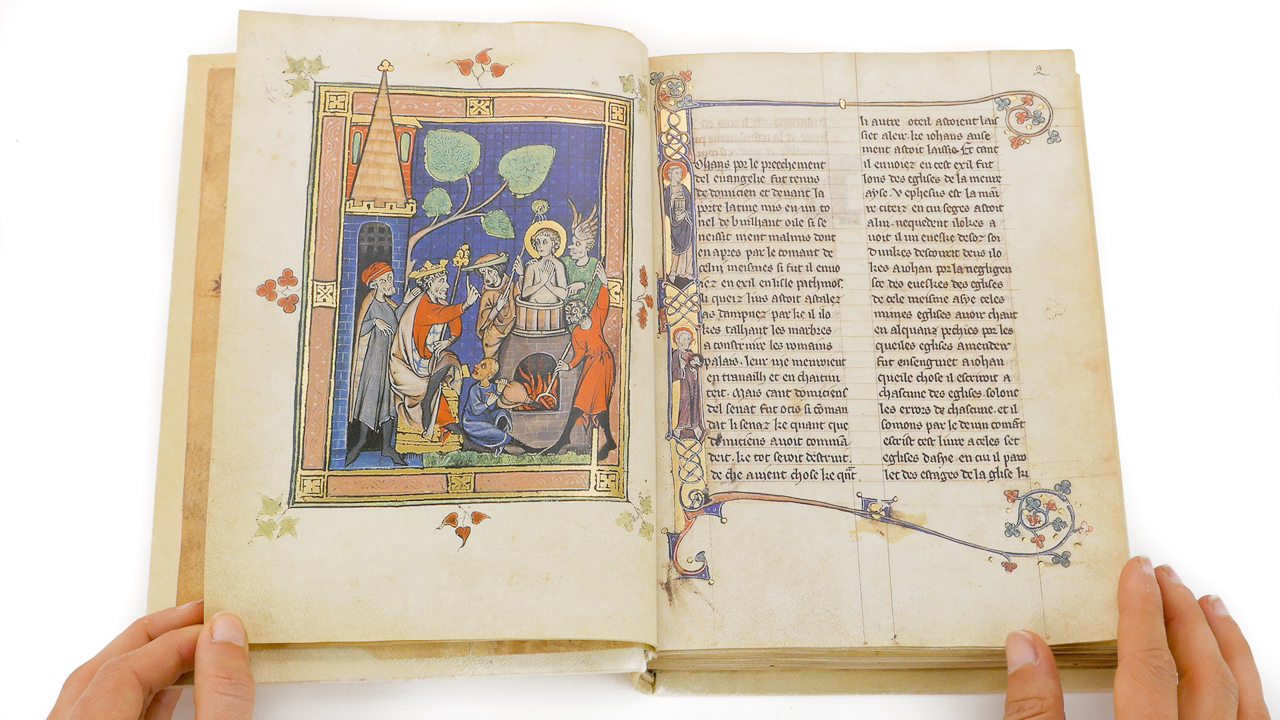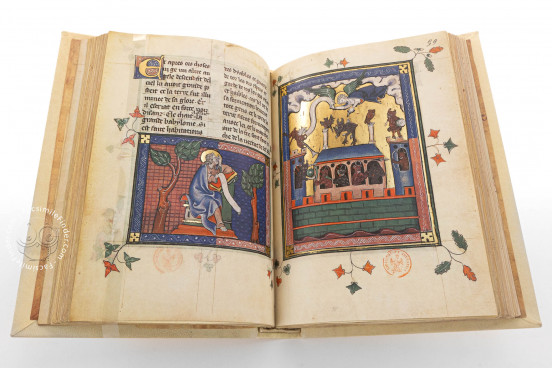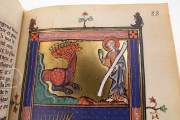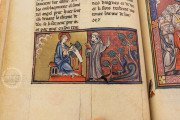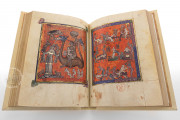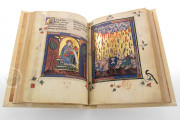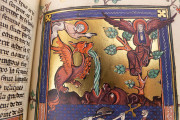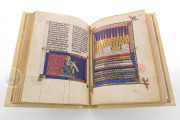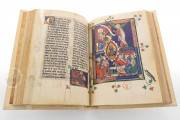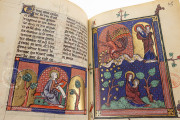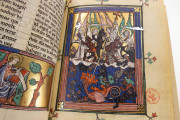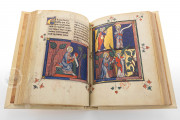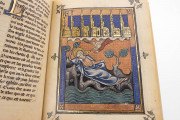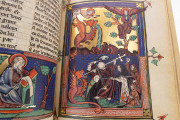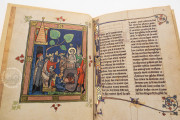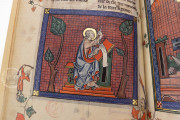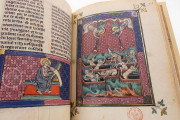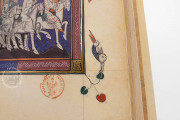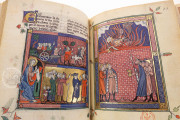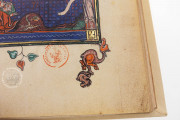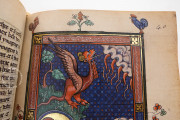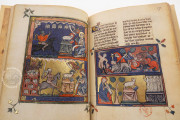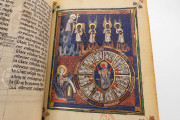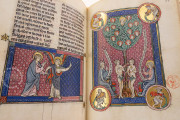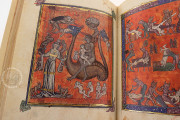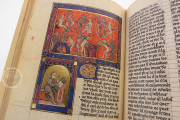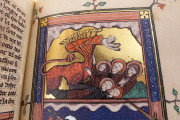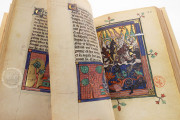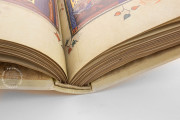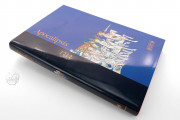The Apocalypse of 1313 was created in France for Isabella (1292-1358), Consort of Edward II, King of England. It was designed and illuminated by Colin Chadewe. Its text is a French translation of the Christian biblical book of the Apocalypse, followed by an extensive commentary. The biblical text is lavishly illuminated. Most openings feature text and a small miniature on the left-hand page and a full-page miniature on the right-hand page, the miniatures numbering 163 in total.
The Apocalypse recounts Saint John the Divine's vision of events leading to the end of time when Christian believers expect the Second Coming of Christ. The book opens with a preface in the form of a brief biography of the author (understood in the Middle Ages as John the Evangelist), who is depicted dozens of times in the manuscript.
Terrifying Visions and Amusing Drolleries
In the manuscript's framed miniatures, Colin Chadewe vividly pictured John's vision of cities, horsemen, locusts, elders, angels, and multi-headed beasts. Rendered in a palette dominated by blue, pink, red, and gold, the paintings are remarkable for the broad gestures and expressive faces of the human figures.
The backgrounds are either of diaper patterns or burnished gold leaf, except for the remarkable series of four miniatures of the damned being tormented in hell, which have fiery red backgrounds (fols. 86r-87v). Beginning on fol. 24r, amusing real and fantastic creatures—including apes, dragons, and hybrids—engaged in various activities are pictured in the margins of the pages with full-page miniatures.
Pictorial Exegesis
Although the miniatures appear within the biblical text, they often reflect aspects of the following unillustrated commentary. The representation of the Tree of Life, for example, includes the Temptation of Eve as recounted in Genesis, to which the commentator alludes, as well as busts of the apostles (here numbering thirteen), the commentator's interpretation of the twelve "fruits" of the Tree of Life (fol. 83r).
John as Active Author
An unusual feature of the Apocalypse's illumination is the emphasis on the author. At times, Chadewe shows the saint viewing the terrible events he describes, but more often the painter depicts John's physical and mental struggle to write down his text. He often shows the saint in the act of writing or pausing to examine or sharpen his quill. More remarkably, Chadewe depicts John's compositional process: biting his fingernails (fol. 58v) or scratching his head (fol. 65v).
Five Scribes
The text is written in two columns in Gothic Textualis by five scribes, four writing the Apocalypse with preface (fols. 2r-85v) and the fifth responsible for the commentary (fols. 87v-166r). A historiated initial occupied by John the Evangelist and John the Baptist introduces the preface (fol. 2r), and a foliate initial opens the commentary (fol. 87v). Each section of the biblical text begins with a gold initial on a pink and blue ground.
Perhaps a Gift from Father to Daughter
The Apocalypse of 1313 may have been created at the behest of Philip IV, "the fair" (1268-1314), King of France, for presentation to his daughter, known as Isabella of France. It was completed in October 1313, five years after her marriage to Edward II of England and months after the birth of her son, the future Edward III. The manuscript is reported to have been in the library of Philip "the good" (1396-1467), Duke of Burgundy, before entering the Bibliothèque nationale (now Bibliothèque nationale de France).
We have 1 facsimile edition of the manuscript "Apocalypse of 1313": Apocalipsis 1313 facsimile edition, published by M. Moleiro Editor, 2006
Request Info / Price
